UTC Weekender Motto: “Neither drought, fire, fog, hogs nor MOSQUITOS will deter us from our appointed rounds!”
Our Weekender started out a bit slowly on Friday afternoon with our trip to Cattail Marsh. Temperatures were in the mid-90’s and all the ponds we visited were at least 80% covered in vegetation. A huge difference from when I was here in April. We persevered and managed to find 21 species, the best of which were 2-3 female Northern Harriers. We ended the day with 21 species.
After a yummy dinner in the private room at La Cantina Mexican Grill, TOS and Golden Triangle Audubon member Dr. John Whittle gave an informative talk about the history of Sabine Woods, future plans for the sanctuary and what species we might expect to see. He also presented each of us with a copy of the 2000 Spring/Summer Volume of TOS Texas Birds which contained a nice article about Sabine Woods by Dr. Whittle.
Unfortunately, things didn’t improve Saturday morning when we arrived at Sabine Woods. The mosquitos were possibly the worst I have ever experienced. Due to the ongoing drought, all the drips were going but all the ponds were dry. The original plan had been to spend the entire morning at the Sanctuary. We braved it out for about 2 hours before conceding we had donated as much blood as we were willing to give! We had three Warblers – Black & White, Nashville and Yellow-rumped. We had a flyover Yellow-billed Cuckoo, many Ruby-crowned Kinglets and Blue-gray Gnatcatchers. The best bird was probably an Ash-throated Flycatcher.
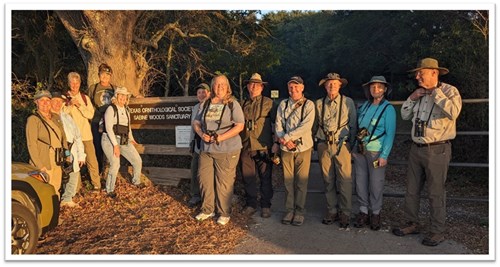
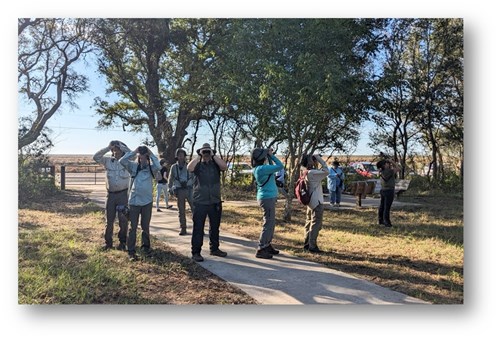
We moved on to Sea Rim State Park. While the mosquito situation did improve, the drought situation did not. The only pond at the park with any water was the one under the (newly reconstructed) Gambusia Boardwalk. The Park Interpretive Ranger joined us as we birded the boardwalk. When I commented on the scarcity of waders and shorebirds compared to the numbers I’d seen in the spring, she explained that the area had been dry all summer, only receiving water in the last month. As this pond is only occasionally a tidal pond, there are little to no fish in it currently. The best bird was a Clapper Rail.


After the Boardwalk we decided to take a break and have an early lunch. During our lunch break we added a Greater Yellowlegs, Song Sparrow, and a Savannah Sparrow.
After lunch we hit the beach in search of a group of American Avocets the Park Ranger had mentioned. We were successful in our search and also added 3 species of terns and 3 species of plovers as well as the usual assortment of shorebirds.

Now, the question became, “What next?” Some of us decided to go donate more blood to the mosquitos at Sabine Woods; four of us opted to make another trip to Cattail Marsh in hopes of relocating a reported Long-tailed Duck and Eared Grebe. The rest of the group headed back to the hotel. After about a 1 ½ mile hike all of us at Cattail Marsh were able to get on the duck – a lifer for three of the birders!! Only two of us were able get on the grebe as it was diving almost continuously. We ended the day with 76 species.
We concluded the day with a fun dinner at Tia Juanita’s Fish Camp! By all reports, the food was yummy!!
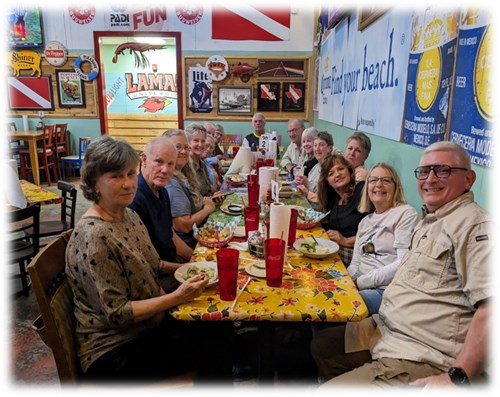
Our travails continued on day three. We started the day with a dense fog advisory, a dense smoke advisory and the potential for feral hogs on the roadway. Fortunately, we knew about the fog and smoke the night before. With safety in mind, we postponed our start time 45 minutes to ensure we at least had some sunlight. It turned out to be a wise decision as we encountered dense fog and dense smoke at the SAME TIME! It was a stressful drive, but we all made it safely to Hooks Woods. Here we found the feral hogs had wreaked havoc on most of the drips and the mosquitos were again swarming. We didn’t linger very long but everyone did enjoy the Steve Gross blind. We moved on to the Houston Audubon Sanctuaries. At Boy Scout Woods we again encountered many more mosquitos than birds. The canopy boardwalk at Smith Oaks was enjoyed by all.
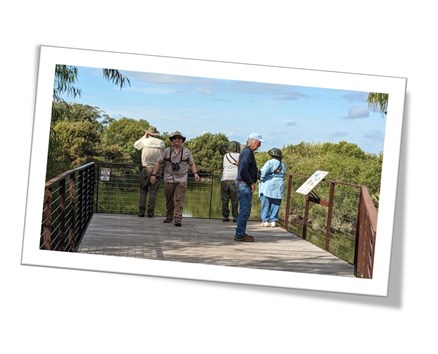
We made a couple of roadside stops as we made our way to the Gulf Coast Bird Observatory HawkWatch Tower. One stop yielded over 600 Long-billed/Short-billed Dowitchers!! Most appeared to be Long-billed, but many were too far away to be sure.
At the Hawkwatch Tower we had several Broad-winged Hawks, American Kestrels, Northern Harriers, Sharp-shinned Hawks, Cooper’s Hawks and five American Oystercatchers.
We ended the day with 62 species.
Our numbers for the weekend were:
Jefferson County – 80 Species
Galveston County – 43 Species
Chambers County – 34
Total Species – 104
What a GREAT group of birders! Despite the many adversities, everyone rolled with the punches and remained upbeat!
Our motto: “Neither drought, fire, fog, hogs nor MOSQUITOS will deter us from our appointed rounds!”
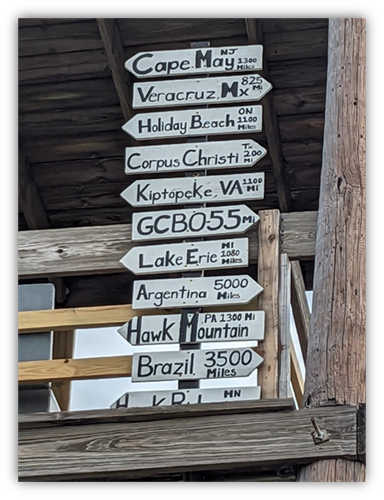
Texas Ornithological Society
Welcome to the Amazing World of Texas Birds!
If you love birds, Texas is definitely the place for you! With eight different geographical regions to explore, each offering its own, unique wildlife environment; more than 660 species to be discovered; and a location adjacent to the tropical regions of Mexico and Central America, you never know what you might see when you grab your binoculars and head out!
Texas Ornithological Society is proud to promote the discovery, knowledge, observation and conservation of birds in Texas since 1953.